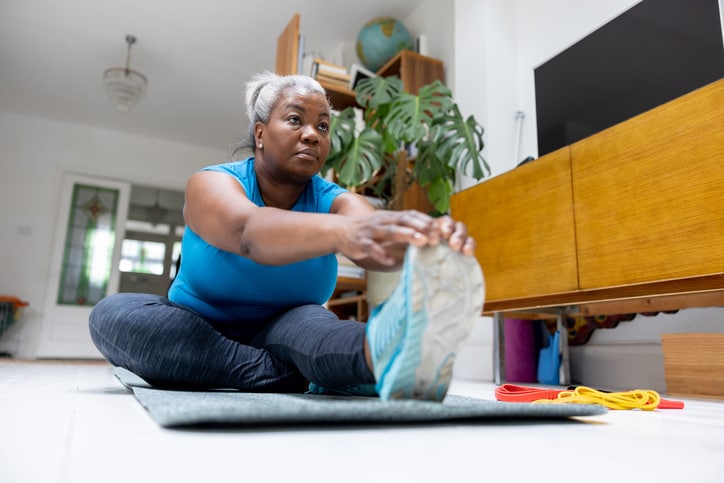So you’ve purchased your first pair of hearing aids or finally convinced your loved one it’s time to get theirs. That first step is a huge milestone, but wearing hearing aids is only part of the process. Cleaning hearing aids daily and maintaining them throughout the year is vital for these pricey, life-enhancing devices to function optimally.
“Our ear canals are full of dead skin cells, earwax and dirt, and hearing aids also brush up against sweat, hair products and moisture from the air,” says Jenn Schumacher, who holds a doctorate in audiology and works as Manager of Audiology Communications at hearing aid company ReSound. “There are tiny openings in hearing aids for the microphones and the loudspeaker, so they can become clogged relatively quickly if they aren’t cleaned regularly.”
Clogs can prevent sound from coming through correctly, explains Schumacher, and excess moisture can get into the electronic components and break them.
How exactly do you clean hearing aids to keep them in tip-top shape so they last? Below, two audiologists share their best hearing aids cleaning advice for older adults or family caregivers.
Why it’s important to clean hearing aids
It may sound obvious that hearing aids should be kept clean, but it’s not just for sanitary purposes. “Dirt, dust, debris, ear wax and moisture can impact hearing aid function, which is why keeping hearing aids clean — really clear of debris — is important,” says Catherine Palmer, who holds her doctorate of clinical science in medical speech-language pathology and is an audiologist, professor at University of Pittsburgh and past president of the American Academy of Audiology.
Hearing aids take in sound through a microphone, which is processed and delivered to the ear through a receiver or loudspeaker, explains Palmer. Failing to keep hearing aids clean hurts efficacy on both ends.
“If the microphone gets dust or hair spray in it, it can reduce the sound that enters the device, distort the sound that enters the device or make it so no sound gets into the device,” Palmer notes. “If no sound gets in, there won’t be any amplified sound delivered to the ear.”
On the other end of the device, if the receiver has wax or debris in it, Palmer adds, it could block or diminish the sound that’s delivered to the ear. Regular cleaning keeps all parts of the device working properly.
“Dirt, dust, debris, ear wax and moisture can impact hearing aid function, which is why keeping hearing aids clean — really clear of debris — is important.”
—Catherine Palmer, an audiologist and professor at University of Pittsburgh
Tips for cleaning hearing aids
Cleaning hearing aids isn’t as straightforward as it might sound due to variances in devices and a number of delicate parts.
Fortunately, most come with a basic cleaning kit containing the essential tools needed, Schumacher says. “These usually include a cloth and brush, along with a small scoop or loop that you can use to gently remove earwax from the tip of the hearing aid,” she adds, “since that’s the part that sits inside the ear canal and is the most likely place to get clogged with wax.”
Now, here’s what it takes to keep them as clean as possible.
Pay attention to the type of device you or your older loved one has
The cleaning process is similar for all hearing aids, though they come in multiple forms, and some require more TLC than others. Hearing aids with more electronic parts sitting in the ear canal, called “custom” or “in-hear” hearing aids, are more exposed to wax, sweat and debris, Schumacher says. They’re shaped to fit into your ear canal, which has benefits, but “the smaller and deeper the hearing aid sits, the more likely it is to need regular, thorough cleaning to keep it working.”
The other style of hearing aids, “behind-the-ear,” have most or all electronic components in a case on top of the outer ear, Schumacher says. Because they’re less exposed to earwax, they’re easier to keep clean — especially if the loudspeaker is in the ear piece rather than in the ear canal.
However, Schumacher says, if your behind-the-ear hearing aid is “receiver-in-ear,” meaning the loudspeaker sits inside the ear, it can require just as much cleaning as the custom kind. If you or your loved one haven’t yet gotten hearing aids, take this into consideration.
Keep up with daily hearing aids cleaning maintenance
Cleaning hearing aids consistently, every day if possible, keeps them working at their best and saves money in the long run in repairs, Schumacher says.
When you take out your hearing aids at night, she explains, wipe the outside with a soft, dry cloth (the one from your cleaning kit or similar). Then, “check for any visible wax or debris clogs in the microphone openings — you’re looking for one or two small holes either at the top of the hearing aid or on the faceplate — and the tip of the hearing aid that goes inside the ear canal,” she explains.
If you see any wax or debris, Schumacher recommends carefully sweeping or scooping it out with your cleaning kit’s brush using a gentle side-to-side motion. Avoid getting bristles into the holes, which can cause damage.
Even if you don’t see anything, it’s still worth the effort. “If you can’t see any debris in the hearing aid, still give the microphone and loudspeaker openings a quick brush side-to-side to remove any invisible buildup” before putting them in their case or charging dock for the night, Schumacher urges.
Prioritize periodic maintenance for hearing aids
Even with daily cleaning, hearing aids need occasional deeper cleans. Many have a piece on the end where sound is delivered called a wax guard, Palmer notes. “This protects the hearing aid from damaging wax, but can fill with wax over time,” she says. If your loudspeaker becomes blocked with wax, you can replace the wax guard yourself to restore function, Palmer adds.
If your hearing aid consists of an earmold connecting to a traditional behind-the-ear hearing aid, you might also require extra cleaning. These wearers “will be provided with a small wire loop that will allow them to clean the tubing in the earmold that may get wax in it,” notes Palmer.
Even if you’re a dedicated cleaner, Palmer says, there’s no escaping that hearing aids are exposed to the warm, moist environment of the ear canal. She and Schumacher recommend visiting your audiology clinic around every six months (or whatever timing your audiologist recommends) for a professional, thorough hearing aid cleaning to keep them functioning ideally for as long as possible.
Hearing aid cleaning dont’s
There are also a few important things to avoid when cleaning hearing aids, according to the experts we spoke to.
Don’t put them in before you do your hair or beauty routine
If you use hair spray, other sprayed hair or beauty products, or perfume, Palmer says, use them before putting in hearing aids. Otherwise, you risk spray entering the microphones and reducing their effectiveness.
Don’t clean with liquid
Schumacher says it’s critical to avoid getting the devices wet, so no soap and water, or cleaning agents like sprays. Stick with the soft cloths and brushes.
Don’t be rough
Avoid jamming any cleaning tools into the hearing aids, Schumacher advises, since pushing the bristles down into the delicate parts can damage them. “When cleaning it, keep movements with the tools more side-to-side and be careful not to go too deep into the openings,” Schumacher says.
Don’t allow moisture in
Moisture from living in a very humid environment or perspiring excessively can damage hearing aids, Palmer says. For those with disposable batteries, she recommends purchasing a dehumidifying kit and leaving hearing aids in the dehumidifier overnight, every night.
If your devices are rechargeable, Palmer suggests putting them in a dehumidifier for a few hours before going on the charger, “though some of the charging docks now come with a desiccant to assist with removing moisture while charging.”
Schumacher adds that if you don’t want to get a humidifier, you can buy your own storage case with desiccant for any hearing aid, which draws out moisture and keeps them working better and for longer.
“The small size of hearing aids, no matter what style they are, definitely creates a challenge in keeping them clean, because it requires sharp eyesight and good manual dexterity.”
—Jenn Schumacher who holds a doctorate in audiology
More hearing aids cleaning tips for family caregivers
Cleaning hearing aids isn’t only a task for the wearer. “The small size of hearing aids, no matter what style they are, definitely creates a challenge in keeping them clean, because it requires sharp eyesight and good manual dexterity,” Schumacher says.
Depending on an aging senior’s memory, health and mobility, family caregivers may need to assist with or do the cleaning, and possibly replace batteries, Palmer says. If the senior hasn’t yet obtained hearing aids, she recommends attending the fitting to learn first-hand about care and maintenance. For trouble-shooting, Palmer recommends visiting YouTube and/or the manufacturer’s website for video instructions on cleaning that device.
Whether you’re taking over hearing aid cleaning duty, or trying to set up an aging senior for success, Schumacher offers these tips:
Create reminders
If your older loved one is capable of daily cleaning but struggles to remember, Schumacher suggests setting up reminders; perhaps phone calls, writing it in their calendar, or setting up a reminder alarm or notification on their phone. She says it can also benefit seniors to leave out written instructions for cleaning.
Set up a workspace
Cleaning hearing aids is easiest in a spot with plenty of surface area and good lighting, so set up a spot at your family member’s table or desk for the nightly cleaning. Schumacher says it’s helpful to lay a hand towel on the workspace to prevent hearing aids, tools or batteries from falling off (or into) the table.
Enhance visibility
What if you or your loved one struggle to see the tiny parts for cleaning? “Even younger people with good eyesight can strain to see every nook and cranny on the hearing aid where debris can hide,” Schumacher says. To help, she recommends getting a tabletop magnifying glass with a bright light.
The bottom line on how to clean hearing aids
Purchasing expensive hearing aids and getting used to wearing these delicate devices is one thing, but the thought of cleaning them daily — whether for yourself or a family member — may seem downright overwhelming. Just remember that it’s a quick process with provided tools, and it’ll soon become second nature. Those couple minutes a day will protect the hearing aids and extend their life in between twice-a-year professional visits, saving you hassle and money.





